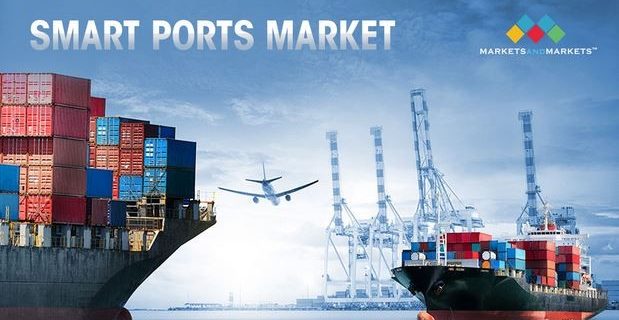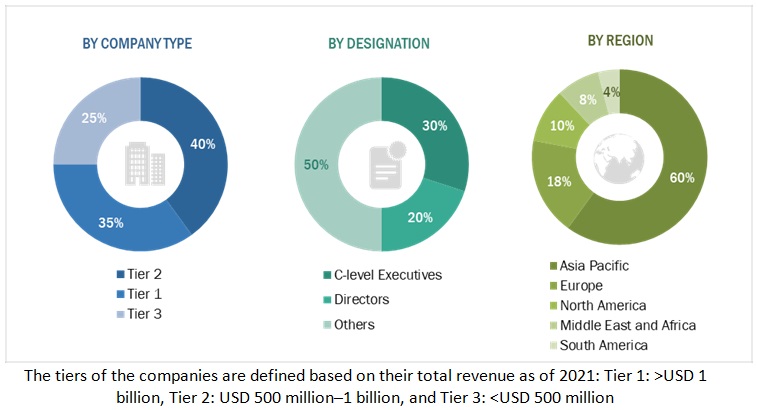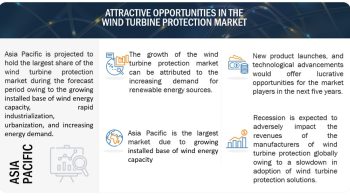
The global smart port market is projected to reach USD 5.7 billion by 2027 from an estimated USD 1.9 billion in 2022, at a CAGR of 24.3% during the forecast period. The global smart port market is primarily being driven by increasing international maritime trade activities and real-time geospatial data to improve port operations across all ports. A smart port is a port that is equipped with multiple technologies, such as the Internet of Things (IoT), blockchain, and artificial intelligence (AI), which helps its operators and users in improving some or many operations and activities, according to the International Maritime Organization (IMO). Additionally, it improves the supply chain and the port community. Additionally, smart ports assist in solving the present and upcoming difficulties encountered by seaport authorities, such as sustainability, productivity pressures, financial limits, safety and security risks, and spatial constraints.
Download PDF Brochure – https://www.marketsandmarkets.com/pdfdownloadNew.asp?id=165784113
Smart ports have a wide range of end-users, such as seaports, shipping companies, custom departments, and logistic companies. Regions like Asia, North America, Middle East, and Africa, and Europe have offered lucrative opportunities for the smart port in technology and services. The robotics industry is transforming as a result of AI, particularly computer vision and machine learning. Businesses have begun to think about fully autonomous robots that can observe, interact, and conceive the environment around them in today ahead in a global market. Industries are searching for dependable and skilled technology partners as they start to traverse this modern technological transformation. Artificial neural networks are used by deep learning models to handle enormous amounts of data, including texts, photos, and audio in produce correct results. Al-driven automation has shown to be beneficial in a variety of applications across several industries, including the material handling, aviation, medical, agricultural, and energy sectors. Al is used to identifying equipment problems or find product irregularities in addition to automating processes.

A smart port’s infrastructure is made up of a variety of devices and tools. The infrastructure that already exists must be improved or new infrastructure must be created by the needs to construct a smart port. The digitalization of ports is greatly aided by technologies like loT, Al, and blockchain. Other equipment changes, in addition to software and technologies, are also necessary. For instance, to handle and carry cargo inside ports, intelligent cranes and automated vehicles are needed.
There are many technologies are used in the smart markets such as internet of things (IoT), blockchain, process automation, artificial intelligence (AI). So this help in the business landscape. The Internet of Things, often known as loT, is a network of linked computing devices, physical items, and digital and mechanical machinery. loT devices have unique IDs (UIDS) and may send data without requiring human-to-human or human-to-computer interaction. loT can also be used to improve data collecting procedures through the application of AI and machine learning Similarly, blockchain is a decentralized ledger of transactions that is replicated and dispersed across the network of computers that make up the blockchain. A record of each transaction is added to the ledger of each party whenever a new transaction on the blockchain takes place. Each block in the chain consists of transactions. Additionally, computer scientists refer to any system that demonstrates intelligence like that of humans as having AI. AI is the ability of a computer or other machine to mimic the functions of the human mind, including learning from examples and experiences, object recognition, understanding and responding to language, decision-making, problem-solving, and integrating these and other functions to carry out tasks that a human might carry out. Moreover, process automation is the use of technology to carry out routine operations or procedures in a firm where human laboratory be replaced. It is done to cut expenses, boost performance, and simplify procedures. Traffic management at port gates, also referred to as identification and recording of all individuals passing through, is required to ensure protection.
The seaport segment, by port type, is expected to be the fastest growing segment of the smart port market. The seaport segment dominated the smart port market There are two types of ports, including inland ports and seaports. A sheltered region on the water where ships dock to load and unload cargo is known as a seaport. The expansion of the smart port business is aided by the increase in seaborne commercial operations. The value of global trade increased to a record USD 7.7 trillion in Q1 2022, up around USD 1 trillion from Q1 2021, according to UNCTAD’s Global Commerce Update, which was released in July 2022. Since trade volumes have increased to a notably lower level, rising commodity prices, which represent an increase of nearly USD 250 million from Q4 2021, are the main cause of the increase. Hanson and Nicholls have estimated trade growth and port demand under four alternative scenarios of changing climate policies and rising global temperatures through 2050. In all cases, port traffic grows, requiring the doubling or even the fourfolding of port areas. With the exception of East Asia and the Pacific, where rates were a little lower, all geographic areas saw considerable trade growth rates in the first quarter of 2022.
Ask Sample Pages – https://www.marketsandmarkets.com/requestsampleNew.asp?id=165784113
The Asia Pacific is estimated to be the largest and the fastest growing market for the smart port during the forecast period. The regional market has been segmented into China, India, South Korea, Japan, Australia, and the Rest of Asia Pacific (Malaysia, Indonesia, Singapore, Philippines, and Vietnam). This region is also a global hub for manufacturing activities. China dominated the Asia Pacific smart port market. Asia Pacific region is experiencing rapid development fueled by the growth of major economies, such as China, India, South Korea, Japan, Indonesia, and Australia. According to the IMF, the region’s economy grew by 6.5% in FY2021 and is expected to increase by 4.9% in FY2022 and 5.1% in FY2023.


